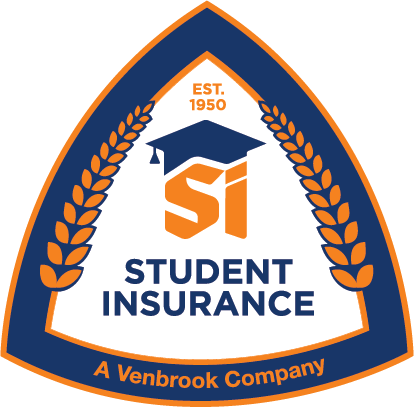Being T-Boned Car Accident
Oh no! shudder: You’re driving along, minding your own business, when suddenly, WHAM! Another car plows into the side of yours. You’re dazed, confused, and in pain. What do you do now?
If you’ve been involved in a T-bone accident, it’s important to stay calm and take the following steps:
What to Do After Being T-Boned in a Car Accident
-
Pull over and check for injuries. If possible, pull over to the side of the road. Check yourself and your passengers for injuries. If anyone is injured, call 911 immediately.
-
Exchange information with the other driver(s). Once you’ve checked for injuries, exchange information with the other driver(s) involved in the accident. This includes your name, address, phone number, insurance information, and license plate numbers.
-
Take photos of the scene. If possible, take pictures of the accident scene. This will help you document the damage and provide evidence to your insurance company.
-
Report the accident to your insurance company. As soon as possible, report the accident to your insurance company. They will help you file a claim and get your car repaired or replaced.
-
Get a copy of the police report. If there was a police report, request a copy of it. This will provide you with an official record of the accident.
-
See a doctor. Even if you don’t feel injured, it’s important to see a doctor after a T-bone accident. Some injuries may not be immediately apparent, and it’s important to get checked out to rule out any serious problems.
-
Hire an attorney. If you’ve been seriously injured in a T-bone accident, you may want to consider hiring an attorney. An attorney can help you get the compensation you deserve for your injuries.
Additional Tips
- Stay calm and don’t panic. It’s natural to feel shaken up after a car accident, but it’s important to stay calm and collected. This will help you make the best decisions for yourself and your passengers.
- Don’t admit fault. Even if you believe you’re at fault for the accident, don’t admit it to the other driver or the police. This could hurt your case later on.
- Be prepared to cooperate with the insurance companies. Both your insurance company and the other driver’s insurance company will want to investigate the accident. Be prepared to provide them with information and documentation.
- Don’t sign anything. Do not sign any documents or agreements until you’ve had a chance to review them with your attorney.
T-bone accidents can be a frightening and traumatic experience. By following these tips, you can help protect yourself and your passengers and get the compensation you deserve.
Being T-Boned: A Guide for Accident Victims
Have you ever been in a car accident where another vehicle struck you from the side, creating a “T” shape? If so, you know that these accidents can be particularly jarring and confusing. Being T-boned can cause significant damage to your car and injuries to you and your passengers. But don’t panic! Here’s a step-by-step guide to help you navigate the aftermath of a T-bone accident:
1. Stay Calm and Check for Injuries
After a T-bone accident, it’s natural to feel shaken up. But it’s important to stay calm and assess yourself and your passengers for injuries. Check for any cuts, bruises, or pain. If you or anyone else is injured, call 911 immediately.
2. Document the Scene
Once you’re sure everyone is safe, it’s essential to document the accident scene. Take photos or videos of the damage to both vehicles and any visible injuries. Get the names and contact information of any witnesses. Note the time, date, and location of the accident. This information will be invaluable for insurance purposes and potential legal proceedings.
3. Contact Your Insurance Company
As soon as possible, contact your insurance company to report the accident. They will guide you through the claims process and help you get your car repaired or replaced. Be sure to provide them with all the documentation you’ve gathered.
4. Watch for Delayed Symptoms
Sometimes, injuries from a car accident don’t show up immediately. Keep an eye out for any pain, discomfort, or other symptoms that develop in the days or weeks following the accident. Don’t hesitate to seek medical attention if you’re experiencing anything unusual.
5. Consider Legal Action
If you or your passengers have sustained serious injuries or the other driver was at fault, you may want to consider legal action to recover compensation for your damages. Contact an experienced car accident lawyer to discuss your options.
Conclusion
Being involved in a T-bone accident can be a stressful and overwhelming experience. However, by following these steps, you can protect yourself and your legal rights. Remember to stay calm, document the scene, contact your insurance company, watch for delayed symptoms, and consider legal action if necessary. With the right information and guidance, you can navigate this difficult time and emerge stronger than ever.
Being T-Boned: What to Do When Your Car Gets Hit From the Side
Getting t-boned is one of the most disorienting experiences a driver can face. This type of accident occurs when another vehicle slams into the side of your car, often at a high rate of speed. The force of the impact can cause your car to spin, roll over, or even be pushed off the road. If you’ve been t-boned, it’s important to know what to do to stay safe and protect your legal rights.
1. Stay Calm and Check for Injuries
After a t-bone accident, it’s natural to feel shaken up. However, it’s important to stay calm and assess the situation. First, check yourself for injuries. If you’re injured, call 911 immediately. Even if you don’t feel injured, it’s important to seek medical attention as soon as possible. Some injuries, such as whiplash, may not show up right away.
2. Move to Safety
If possible, move your vehicle to a safe location out of traffic. This will prevent further accidents and allow emergency services to reach you quickly. If you’re unable to move your vehicle, stay inside and buckle up. Turn on your hazard lights to alert other drivers.
3. Exchange Information
Once you’re in a safe place, exchange information with the other driver(s) involved in the accident. This includes your name, address, phone number, insurance information, and license numbers. You should also take photos of the damage to both vehicles and get the names and contact information of any witnesses.
It’s important to be polite and cooperative, even if you’re angry or upset. Getting into an argument with the other driver will only make the situation worse. If the other driver is being aggressive or unreasonable, call the police.
If you’re too injured to exchange information at the scene of the accident, you can do so later through your insurance companies.
When exchanging information, it’s important to be accurate and complete. Providing false or incomplete information could jeopardize your insurance claim.
4. Report the Accident
You are legally required to report any car accident to your insurance company. You should also report the accident to the police, especially if there are any injuries or significant damage. The police report will provide an official record of the accident and can be helpful if you need to file a claim with your insurance company.
5. Get Legal Help
If you’ve been injured in a t-bone accident, it’s important to get legal help. An experienced car accident attorney can help you protect your rights and get you the compensation you deserve. An attorney can also help you deal with the insurance companies and negotiate a settlement.
Beware: You’ve Been T-Boned
After the initial shock of a T-bone accident wears off, things can get complicated fast. It’s like being caught in a game of pinball, with your car as the ball and other vehicles as the bumpers. But fear not, my friend, because we’re here to guide you through the aftermath and help you navigate the treacherous waters ahead.
1. Stay Calm and Assess the Situation
Take a deep breath and try to keep your wits about you. Check yourself for injuries, then cautiously exit your vehicle. If you suspect any serious injuries, call 911 immediately. Once you’re out of harm’s way, take a quick stock of your surroundings. Note the location, weather conditions, and any potential hazards.
2. Contact the Authorities
In most states, you’re legally required to report accidents involving injuries or property damage to the police. Calling the cops creates an official record of the incident, which can be invaluable for insurance claims and legal proceedings down the road. Give them a clear and concise account of what happened, and provide them with your contact information.
3. Exchange Information
Once you’re in a safe location, exchange information with the other driver(s) involved in the accident. This includes their names, addresses, phone numbers, insurance companies, policy numbers, and license plate numbers. Take photos of their driver’s licenses and insurance cards if possible. Don’t forget to jot down any witness contact information as well.
4. Document the Scene
Grab your smartphone and become a digital detective. Take plenty of pictures of the accident scene, including damage to both vehicles, any nearby traffic signs or signals, and any visible injuries. If there’s a nearby business with security cameras, ask if they’d be willing to share any footage. The more evidence you have, the better equipped you’ll be to prove your case.
5. Seek Medical Attention
Even if you’re feeling fine, it’s crucial to seek medical attention after a car accident. Some injuries, like whiplash, may not show up immediately. Plus, having a doctor document your injuries will strengthen your insurance claim. Be sure to follow your doctor’s instructions and attend all follow-up appointments.
Being T-Boned: Understanding Your Rights and Next Steps
Getting t-boned in a car accident can be a heart-stopping experience. If you’ve been involved in one, it’s crucial to stay calm and know your rights. Here’s a comprehensive guide to help you navigate the aftermath:
1. Ensure Safety
First and foremost, check for injuries. If you or anyone else is hurt, call for emergency medical services immediately. Move your vehicle to a safe location if possible, and turn on your hazard lights to alert other drivers.
2. Exchange Information
Once you’re in a safe place, exchange information with the other driver(s) involved. This includes your name, address, phone number, insurance information, and license numbers. Take photos of the scene, including damage to both vehicles.
3. Document the Scene
It’s essential to document the accident as thoroughly as possible. Write down what happened, including the time, location, weather conditions, and any witnesses. Keep track of all medical expenses and lost wages related to the accident.
4. Report the Accident
Report the accident to the police and your insurance company as soon as possible. Provide them with a detailed account of what happened and any injuries sustained. The police report will serve as an official record of the accident.
5. Seek Medical Attention
Even if you don’t feel injured immediately, it’s important to seek medical attention after a car accident. Some injuries, such as whiplash and concussions, may not show up right away. Your doctor can assess your injuries and recommend appropriate treatment options.
Just because you feel okay initially doesn’t mean you’re in the clear. Don’t discount the possibility of delayed symptoms, which could rear their ugly head days or even weeks later. If something doesn’t feel quite right, don’t hesitate to get it checked out. It’s better to be safe than sorry.
Remember, your health is paramount after a car accident. Ignoring seemingly minor symptoms could lead to more serious problems down the road. Don’t be afraid to seek medical attention, even if you feel like you’re overreacting. It’s always better to err on the side of caution.
Being T-Boned Car Accident
Getting into a car accident is never an easy experience, but if you’ve been t-boned, it can be downright terrifying. The force of the impact can be incredibly jarring, and you may be left feeling disoriented, injured, and unsure of what to do next. Here are some steps to take after being t-boned in a car accident:
1. Stay Calm and Assess the Situation
This can be difficult to do in the aftermath of a traumatic event, but it’s important to try to stay calm and assess the situation. Check yourself for any injuries, then check on your passengers. If there are other vehicles involved, check on the occupants of those vehicles as well.
2. Call the Police
Calling the police is an important step after any car accident, but it’s especially important after a t-bone accident. The police will be able to investigate the accident, file a report, and help you to exchange information with the other drivers involved.
3. Exchange Information
Once you’ve called the police, exchange information with the other drivers involved in the accident. This includes your name, address, phone number, insurance information, and license plate numbers.
4. Take Pictures
If you’re able to, take pictures of the accident scene. This will help you to document the damage to your vehicle and the other vehicles involved. You should also take pictures of any injuries you or your passengers have sustained.
5. Seek Medical Attention
Even if you don’t feel injured, it’s important to seek medical attention after a t-bone accident. Some injuries, such as whiplash, may not be immediately apparent. It’s better to get checked out by a doctor to make sure you don’t have any hidden injuries.
6. Protect Your Legal Rights
After a t-bone accident, it’s important to protect your legal rights. This means hiring an experienced car accident attorney who can help you to get the compensation you deserve for your injuries and damages. An attorney can also help you to negotiate with the insurance companies and ensure that you receive a fair settlement.
Being t-boned in a car accident can be a frightening and confusing experience. However, by following these steps, you can help to protect yourself and your passengers, and ensure that you get the compensation you deserve for your injuries and damages.
T-Bone Accidents: The Aftermath
A T-bone collision, a harrowing experience, occurs when one vehicle crashes into the side of another at a perpendicular angle. The consequences can be devastating, leaving victims grappling with a multitude of physical, emotional, and financial challenges.
In the aftermath of a T-bone accident, it’s crucial to prioritize your well-being. Seek medical attention promptly to assess and treat any injuries. Time is of the essence as internal injuries may not manifest immediately.
Once your health is stabilized, the road to recovery extends beyond the physical realm. The emotional toll of an accident can be profound, triggering anxiety, depression, and other mental health concerns. Professional counseling can provide invaluable support during this difficult time.
Financial Repercussions
T-bone accidents often result in substantial financial burdens. Medical expenses can pile up quickly, and lost income due to missed work can further strain resources. It’s essential to document all accident-related expenses meticulously.
In such circumstances, seeking legal counsel may be prudent. An experienced attorney can guide you through the complexities of insurance claims and personal injury lawsuits, helping you pursue fair compensation for your losses.
Long-Term Consequences
The long-term consequences of a T-bone accident can be far-reaching. Chronic pain, physical impairments, and cognitive difficulties are potential challenges that victims may face. It’s important to monitor your health closely and seek ongoing medical attention as needed.
Avoiding Tragedy
While T-bone accidents are inherently unpredictable, there are measures we can take to minimize the risk of such occurrences. Defensive driving techniques, such as maintaining a safe following distance and obeying traffic signals, can help prevent collisions.
Inattentive driving, distracted by cell phones or other electronic devices, is a major contributing factor to T-bone accidents. By exercising vigilance behind the wheel, we can create a safer driving environment for all.
Documenting the Accident
Thorough documentation is crucial after a T-bone accident. Take comprehensive photographs of the accident scene, your vehicle, and any visible injuries. Maintain a detailed record of all medical expenses and lost income related to the incident. This documentation will serve as invaluable evidence in any subsequent insurance claims or legal proceedings.
Remember, you’re not alone. In the aftermath of a T-bone accident, there are resources available to assist you with your physical, emotional, and financial recovery. By understanding the complexities of such accidents and taking proactive steps, we can mitigate the long-term consequences and move forward with resilience.
Being T-boned Car Accident: Navigating the Aftermath
Rear-end collisions and fender benders are common occurrences on the road, but when your car gets T-boned, it’s an entirely different ball game. The impact can be devastating, leaving you with severe injuries and extensive property damage. If you’ve recently been involved in a T-bone car accident, here’s a comprehensive guide to help you navigate the aftermath:
1. Ensure Your Safety
Your primary concern after a T-bone car accident should be ensuring the safety of yourself and any passengers. Stay calm and check for injuries. If anyone appears hurt, call for emergency medical services immediately.
2. Exchange Information
Once you’ve confirmed everyone’s well-being, exchange contact information with the other driver(s) involved. This includes names, addresses, phone numbers, and insurance policy numbers.
3. File a Police Report
It’s crucial to file a police report after a T-bone accident. This will provide an official record of the event and help determine fault.
4. Document the Scene
Take plenty of photos of the accident scene, including the damage to your vehicles, the surrounding area, and any visible injuries. These images will serve as valuable evidence for insurance purposes.
5. Seek Medical Attention
Even if you don’t feel injured, it’s important to seek medical attention as soon as possible. Some injuries, such as whiplash, may not manifest immediately.
6. Contact Your Insurance Company
Notify your insurance company promptly and provide them with details of the accident. They will guide you through the claims process and assist with repairs or replacements.
7. Consider Legal Options
If you’ve sustained significant injuries or property damage, you may want to consider consulting with a lawyer to discuss your legal options. They can help you determine fault, negotiate with insurance companies, and pursue compensation.




Leave a Reply